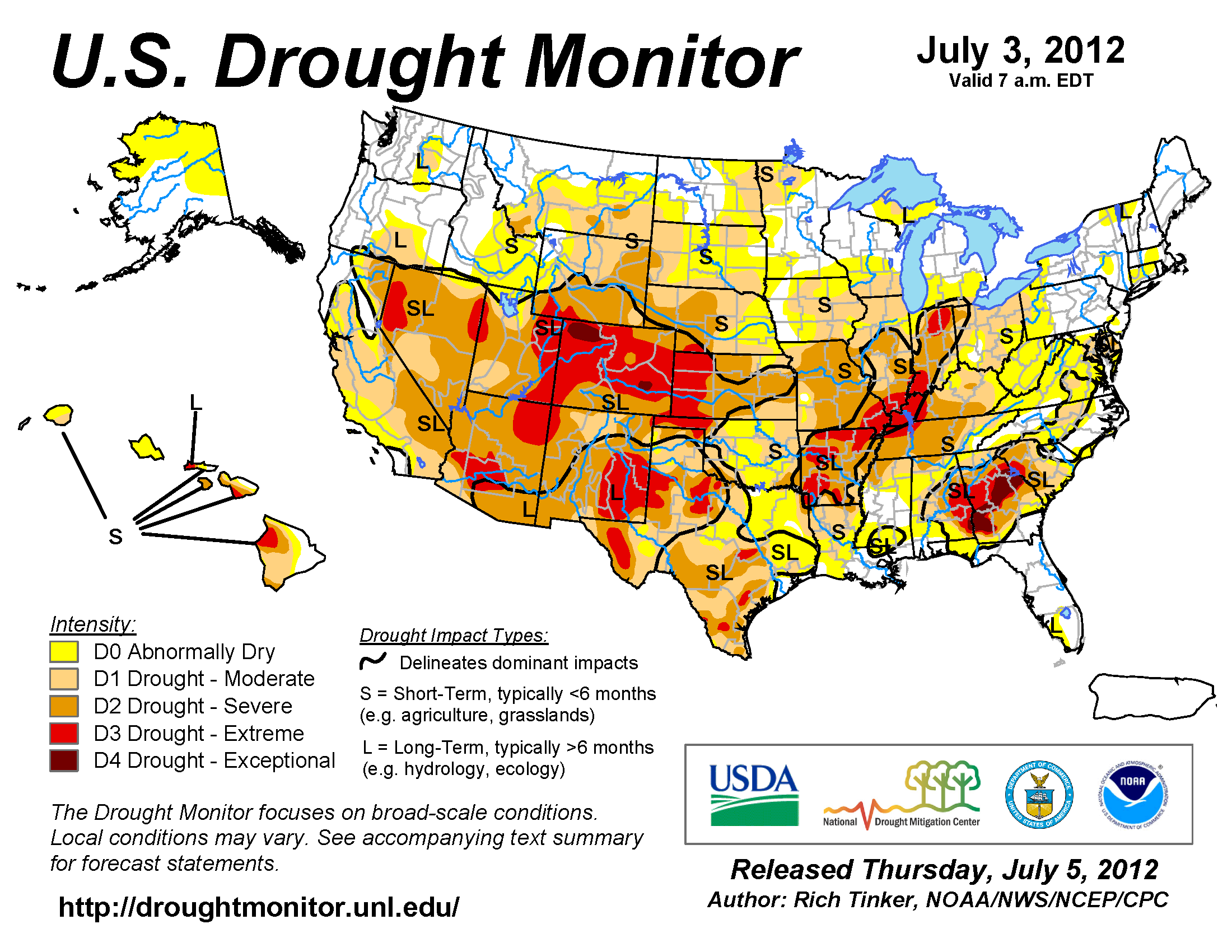Near record-breaking droughts, wildfires could advance climate change dialogue
This post contributed by Terence Houston, Science Policy Analyst
New reports continue to suggest that rising temperatures are coinciding with near record-breaking numbers of droughts and wildfires across the United States. Taken collectively, the evidence lends to the notion that climate change is having serious impacts on human society.
The National Oceanic Atmospheric Administration (NOAA), the leader in providing US weather forecasting data, recently noted that the globally-averaged temperature for June 2012 was the fourth warmest June since 1880. According to NOAA, “It also marks the 36th consecutive June and 328th consecutive month with a global temperature above the 20th century average.” The agency reports that global land surface temperature for June was 1.07°C (1.93°F) above the 20th century average of 13.3°C (55.9°F), the warmest June on record and the second month in a row where global land temperature broke a record for warmth. The world’s ocean temperatures for June marked the 10th warmest temperatures on record.
NOAA reports that more than 55 percent of the continental United States was experiencing severe to extreme drought conditions in June. The last time drought conditions were worse was December of 1956, when 58 percent of the country was experiencing moderate to extreme drought. According to the agency, June farmer reports of pasture and row crop conditions have recently deteriorated to their poorest conditions for that month since 1988. The agency identified the hardest hit areas as the Southern to Central Rockies, the Central Plains and the Ohio Valley for having the least precipitation and smallest percent of normal precipitation between March and June 2012.
For many areas, including the Rockies, the dry conditions have been coupled with an increase in wildfires. According to NOAA, the 1.36 million acres that burned nationwide during June amounted to the second most burned acreage on record for the month, despite the fact that there were fewer individual outbreaks. Since 2010, the number of acres burned per fire in June has surpassed all years from the previous decade with the exception of 2005 and in the past three years, has nearly doubled the average of the past decade. National fire management efforts are coordinate through the National Interagency Fire Center, a collaboration of organizations and government agencies including the US Forest Service, the Bureau of Land Management, the National Park Service, the National Weather Service and the Federal Emergency Management Agency.
At the federal level, discussion of climate change policy has become polarized to an unprecedented level. At the same time, though it might appear hypocritical to some, there remains an interest across political parties and ideologies on the impacts changes are having on local communities, be they wildfires, droughts or floods. Ergo, while implementation of federal measures to deter climate change nationwide remain controversial, everyone wants to know what’s going on in their own backyard and how they can mitigate negative impacts, particularly those clearly detrimental to the economy, such as substantial loss of agricultural yield or infrastructural damage.
Consequently, there remains an avenue to at least open the door to a productive discussion with policymakers on the impacts of the changing climate through a concentrated focus on its impacts within their own communities. After all, “all politics is local.”
